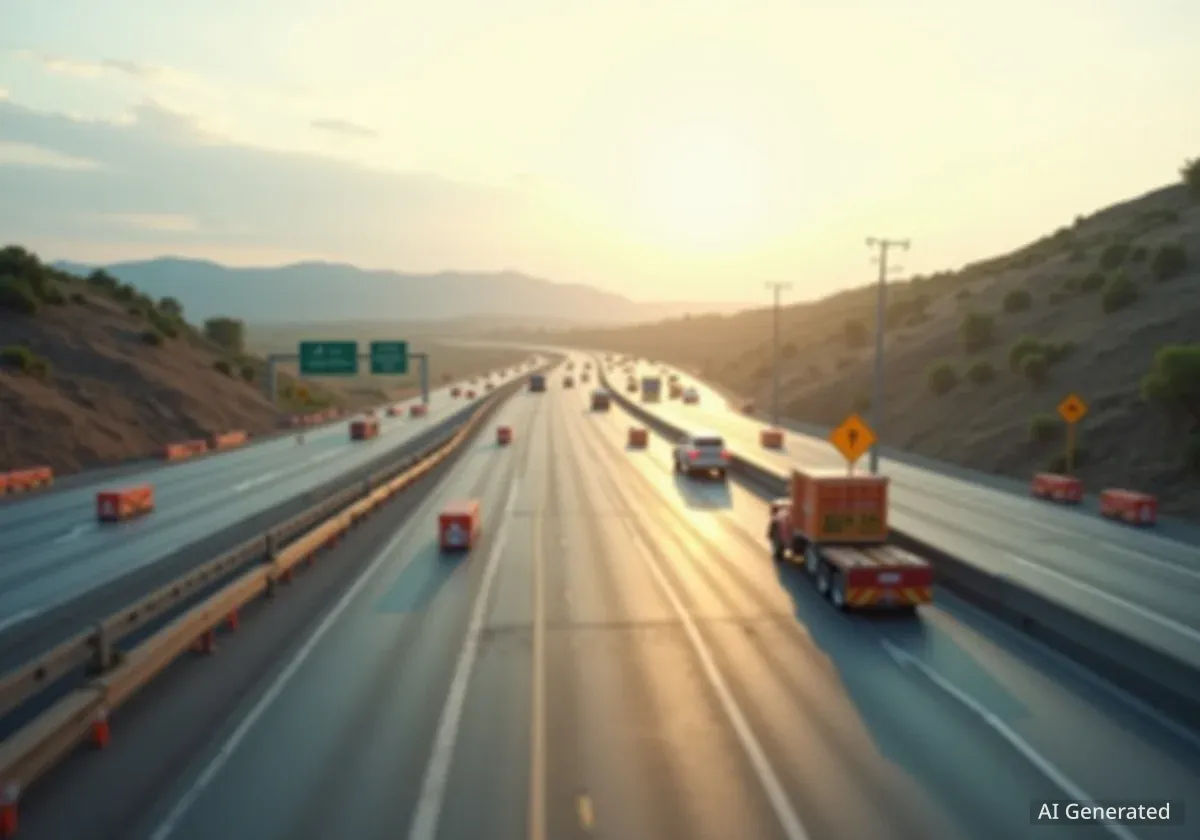The Clark Memorial Bridge, a key traffic artery connecting Louisville, Kentucky, and Southern Indiana, has fully reopened to traffic after a single-vehicle crash prompted a complete shutdown on Thursday afternoon. The incident caused significant delays for commuters, though authorities reported no injuries.
Key Takeaways
- A single-vehicle crash occurred on the Clark Memorial Bridge on Thursday, October 2, 2025.
- The bridge was closed in both directions while emergency crews and a tow truck cleared the scene.
- No injuries were reported as a result of the collision.
- Traffic has resumed, but residual delays are expected as the backlog clears.
Details of the Bridge Incident
On Thursday afternoon, traffic on the Clark Memorial Bridge came to a standstill following a collision. According to a dispatch from MetroSafe, a single car struck the outer side of the bridge structure. The impact did not result in any injuries to the driver or passengers.
In response to the crash, officials made the decision to close the bridge to all traffic in both directions. This precautionary measure was necessary to ensure the safety of emergency responders and to allow for the safe removal of the involved vehicle. The closure was confirmed by live traffic cameras in the area.
Incident Response
Officials stated the closure was required to wait for a tow truck to arrive and safely remove the vehicle from the travel lanes. Full closures for incidents on bridges are standard procedure to prevent secondary accidents and allow crews to work without interference from passing traffic.
Impact on Commuters and Regional Traffic
The closure of the Clark Memorial Bridge created immediate and widespread traffic congestion. As one of the primary crossings over the Ohio River, its shutdown forced thousands of drivers to seek alternative routes during a busy period of the day. This placed additional strain on other major crossings, such as the Abraham Lincoln Bridge and the John F. Kennedy Memorial Bridge.
Traffic monitoring services, including TRIMARC (Traffic Response and Incident Management Assisting the River Cities), provided real-time updates to help drivers navigate the disruption. Commuters experienced significant delays, with traffic backing up on connecting interstates and local streets in both downtown Louisville and Jeffersonville, Indiana.
"Motorists were advised to expect significant delays and consider using alternate routes until the scene was cleared," a traffic alert from TRIMARC noted during the incident.
The incident highlights the critical role the bridge plays in the daily life of the region. A disruption of any length can have a cascading effect on the entire metropolitan transportation network, affecting not only personal travel but also commercial transit.
About the Clark Memorial Bridge
Opened in 1929 and also known as the Second Street Bridge, the Clark Memorial Bridge is a cantilevered truss bridge that carries four lanes of US Route 31. Before the completion of the Ohio River Bridges Project, it was a vital toll-free alternative for local traffic. It carries an estimated 20,000 to 25,000 vehicles per day, making it an essential link for the Louisville metropolitan area.
Bridge Reopening and Current Status
Crews worked efficiently to manage the scene. Once the tow truck removed the damaged vehicle, officials conducted a brief assessment to ensure there was no immediate structural concern before reopening the lanes. At approximately 1:56 PM EDT, authorities confirmed that the bridge was once again open to traffic in both directions.
While the lanes are now clear, transportation officials have advised that drivers should still anticipate some lingering delays. The backlog of traffic created during the closure will take time to dissipate completely. Drivers are encouraged to remain patient or continue to use alternate routes if possible to avoid the remaining congestion.
For the most current information, commuters should consult live traffic resources like TRIMARC, which provide up-to-the-minute details on traffic flow and potential slowdowns across the region. This service is crucial for helping the transportation system return to normal operating conditions following an unexpected disruption.
Bridge Safety Protocols
Incidents on major bridges often require a swift and cautious response due to the unique environment. Unlike a crash on a standard highway, there are limited options for diverting traffic or moving vehicles to a shoulder. The primary goal is always the safety of the public and the emergency personnel on scene.
Key steps in a bridge incident response typically include:
- Immediate Closure: Securing the area by stopping traffic flow prevents further collisions.
- Emergency Access: A clear bridge allows fire, police, and medical services to arrive quickly.
- Scene Management: Towing and cleanup operations can proceed without the hazard of moving traffic.
- Structural Check: In cases of significant impact, a brief inspection may be needed to ensure the bridge's integrity.
In this case, the response followed standard protocols, leading to a safe resolution with no reported injuries. The temporary inconvenience for drivers underscores the importance of these safety measures in preventing a minor incident from escalating into a more serious event.





